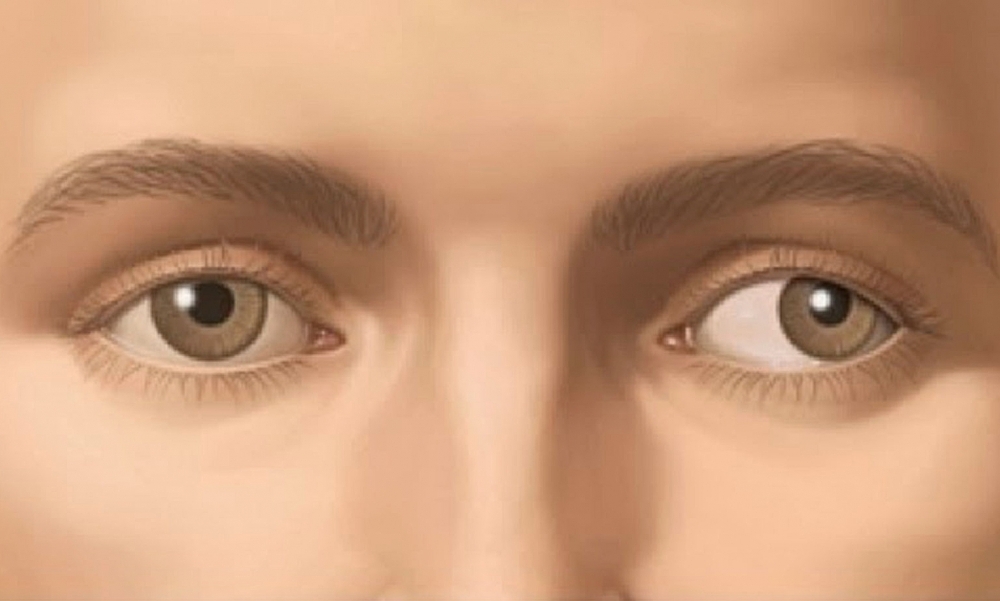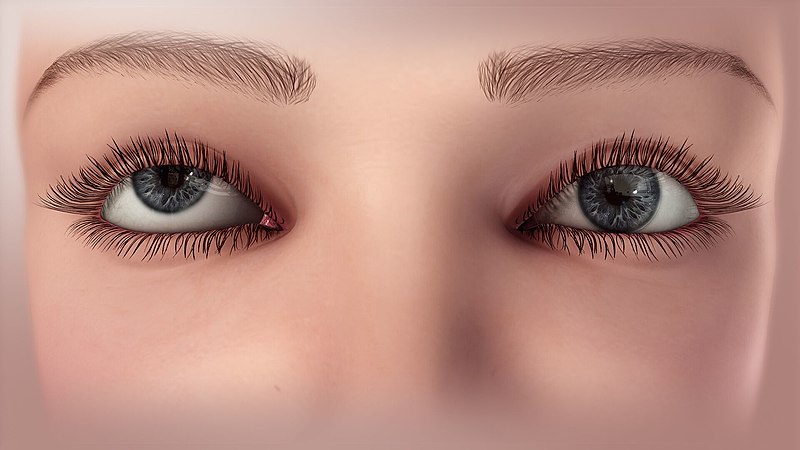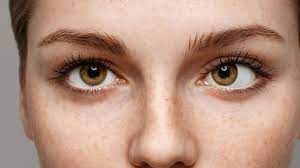Introduction to Tropias and Phorias
Greetings to all and sundry,
We are almost at the point where we can say Thank God is Friday because the weekend is here and i know we are all excited about it, even the most hard worker is excited about the weekend, we can't work forever you now. Anyway how are we all doing? I hope the week has been kind to you so far?

I am here once again and as you already know when i come then is about our ocular health, things we can do for the betterment of our vision as well as solutions to some ocular issues that bothers us on a daily. Today i want to discuss a condition of the eye which is not so common and yet can be quite disturbing and i do hope you enjoy the read.
Introduction
Ocular deviations are not so common in our contemporary society but every now and then you may come across an individual with the condition. In the western world these issues are normally operated on or sorted out with binocular vision training so long as the patient can afford it.
In my part of the world unfortunately those who find themselves with the condition either cannot afford the necessary treatment or wait too long or are just afraid of surgery. Well, there are always a myriad of reasons, it is only when we probe that we get to discover.

Ocular deviations are known to be more prevalent in females than males and research tells that this condition can have lots of psychological implications on an individual if not dealt with the right way, this is because kids with ocular deviations tend to be preyed on by their colleagues in school.
Deviations of the eye can be obvious or hidden and yet very much treatable, and so i am hoping that you get to learn a thing or two from what we have to discuss today and you be able to encourage that friend, colleague, neighbor, etc of yours to see the Optometrist or Ophthalmologist to get things sorted out for them.
Phorias
Phorias are basically hidden deviation of the eye, when you look at someone with a phoria's eye you won't be able to tell that the person as a deviation between the two eyes. This is because it only manifest itself when something called fusion is broken. Fusion has to do with both eyes seeing or coordinating together for vision.
We all have some amount of phoria in us, when fusion is broken our eyes may dissociate just a little bit towards the outside or laterally. This is known as physiological phoria or exophoria to be exact, it is necessary for us to be able to see in 3 dimension and also appreciate depth better especially when objects are closer to us.

This type of depth perception is known as stereopsis, stereopsis can only be achieve with binocular vision. And so phoria tends to most often be a binocular vision anomaly, thus when the two eyes are not coordinating as they ought to but it can also come about as a result of refractive errors.
For instance individuals with high hyperopia may experience esophoria or hidden deviation inwards when fusion is broken as a result of the accommodation the eye goes through to enable them see. Now this would only happen when the eye's ability to compensate for this power struggle runs out at a point, then it would come out for a while.
This compensation ability of the eye is known as vergence, divergence means the two eyes move out whereas convergence means they move in together. When the ability to compensate is too low then the hidden deviation may move from hidden to become permanently manifested and that will result in tropia.
Tropia
Tropias are thus manifest deviations of the eye, you can see this by looking directly at the eyes of the individual. In my local dialect the locals refer to this as "anikyewo", whereas others use the term "merehw3 me b33bi", which transliterate as i am looking at my somewhere.
This is because the deviated eye does not follow the pattern of eye movement you expect it to make and so even though the person may be talking to you and looking at you the eye would be looking somewhere. Now the good news is that most often than not both phoria and tropia can be treated or managed.
When the source is binocular vision anomaly you may be referred to a binocular vision specialist who through lenses and therapy can get your eye to gain enough power to compensate for the deviation bringing things back to normal. However, the cause is anatomical as is also quite common with tropia cases, so you may need surgery.
At birth the extraocular muscles of the eye may be affected one way or the other or may congenitally not have grown as it ought to, when this happens tropia becomes quite obvious from infancy and should be dealt with within the sensitive period of the child thus around 3 to 10 years of their life.
This would ensure that the child developments a good binocular vision function as well as good vision so as to prevent amblyopia from setting in. Amblyopia is when the eye refuses to see no matter what we do and it happens when the brain is deprived of the right stimuli during growth.
And so in this case your pediatric ophthalmologist would cut parts of the muscles and straighten the eye accordingly allowing the right posture and movement of the eye. It can still be done for you after you grow however, that would basically be for aesthetic purposes as chances of vision improvements would be less.
Conclusion
At the end of the day it all boils down to having a comprehensive eye examination. Hidden tropias can cause headaches and other ocular discomfort until it is eventually diagnosed and treated, having a comprehensive examination would provide the opportunity of it being diagnosed so you may be free. Do not just keep taking pain killers for your headaches, get your eyes checked.

The eye is such a beautiful organ such that everything about it is interconnect and related both physiologically and anatomically, check your child's eyes early, have your eyes checked after this article if you are yet to have an eye examination before and you may just find the solution to your long terms issues. I do hope that you got a thing or two from what i had to share today, thanks for reading and i wish you a wonderful time.
Further Reading
Brodsky M. C. (2020). Phoria Adaptation: The Ghost in the Machine. Journal of binocular vision and ocular motility, 70(1), 1–10. https://doi.org/10.1080/2576117X.2019.1706699.
Harcourt B. (1976). Squint. British medical journal, 1(6011), 703–705. https://doi.org/10.1136/bmj.1.6011.703.
Fielder A. R. (1989). The management of squint. Archives of disease in childhood, 64(3), 413–418. https://doi.org/10.1136/adc.64.3.413.
Dysli, M., & Abegg, M. (2016). Gaze-dependent phoria and vergence adaptation. Journal of vision, 16(3), 2. https://doi.org/10.1167/16.3.2.

Thanks for your contribution to the STEMsocial community. Feel free to join us on discord to get to know the rest of us!
Please consider delegating to the @stemsocial account (85% of the curation rewards are returned).
Thanks for including @stemsocial as a beneficiary, which gives you stronger support.